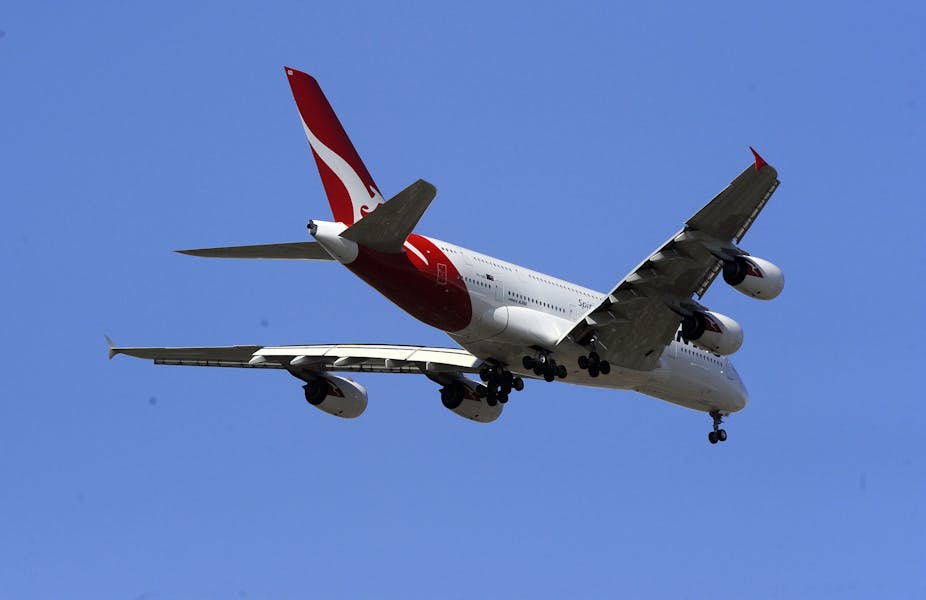With the political debate over climate change getting muddier, many people who used to reduce their greenhouse gas emissions by buying carbon offsets are no longer doing so.
The market for carbon offsets grew strongly around the world from 2005 to 2008. But in 2009, the Global Financial Crisis caused the market to shrink. As businesses cut back on spending, carbon offsets became a luxury that many could not afford.
In 2009, the global voluntary carbon market was valued at about $387 million. This is far less than the $144 billion value of regulated carbon markets, such as the European Union’s emission trading scheme.
If the market for carbon offsets is to start growing again, it needs to overcome two key barriers. Carbon offset providers need to convince businesses and the public of the value of voluntarily reducing their emissions.
But this has become increasingly difficult as public concern about climate change and willingness to pay for climate action has declined. With many consumers resisting the Gillard Government’s proposed mandatory carbon price, encouraging voluntary offsetting will be challenging.
Nevertheless, there are many businesses and households that wish to take responsibility for their own emissions. Sydney Water and News Limited are two prominent examples of businesses using carbon offsets to go carbon neutral, reducing their net emissions to zero.
So what are you getting when you buy a carbon offset? Carbon offsets are created by projects that reduce emissions. The project might improve energy efficiency, or use renewable energy, or plant trees. To prove that it has reduced emissions, the project needs to meet particular standards.
The Australian Government developed a National Carbon Offset Standard (NCOS) that defines what counts as a genuine carbon offset. Many different kinds of project can create carbon offsets under NCOS. For example, Qantas gets its carbon offsets from a Cambodian project providing local people with improved cooking stoves, a wind farm in China and a Brazilian project preventing logging in the Amazon.
Right now, most of the projects are in developing countries. This is to guarantee that the emission reductions add to what Australia is already doing to meet its national targets under the Kyoto Protocol. In future, the Gillard Government’s Carbon Farming Initiative will allow farmers, forest growers and landholders to create carbon offsets from land-use projects in Australia.
Carbon offset businesses buy credits from these projects and sell them to consumers. The Carbon Offset Guide lists 91 carbon offset businesses operating in Australia. These businesses usually have calculators on their websites that help you to work out your carbon footprint and decide how much you want to reduce it.
Airline companies, like Qantas and Virgin Blue, will work out the emissions from your flight and offer you an offset to cover them. If you buy your ticket online, it’s as simple as ticking an extra box.
But the voluntary carbon market needs to overcome doubts about the quality of carbon offsets. In the early years of the market, some providers gave little information about the offsets they were selling. Some did not seek accreditation for their products and in some cases couldn’t guarantee they’d actually reduce emissions as promised. These ‘carbon cowboys’ were more interested in making a quick buck than achieving an environmental outcome.
After Australia ratified the Kyoto Protocol, it also became clear that domestic carbon offset programs would not reduce emissions further than the Kyoto Protocol required. This meant that people buying offsets from domestic projects were only contributing to Australia’s existing targets, not going beyond those targets as many buyers thought.
In essence, we were doing the government’s job for them - allowing big emitters to keep polluting while we offset our own behaviour. The voluntary carbon market was slow to respond to this changing situation.
In 2008, the Carbon Offset Watch project tried to renew confidence in the voluntary carbon market by assessing and ranking the quality of carbon offset providers. Businesses that scored well in Carbon Offset Watch were those that offered convincing evidence that the offsets they were selling would deliver real emission reductions.
In the same year, the ACCC developed guidance on appropriate carbon offset claims under the Trade Practices Act. These initiatives, and the commencement of the National Standard in July last year, have provided greater consumer confidence in the voluntary carbon market.
Carbon offsets are no substitute for reducing your own household emissions. By improving your energy efficiency, installing solar hot water or using your car less, you can reduce emissions and save money. But if you want to take responsibility for your remaining emissions and you are willing to put your money where your mouth is, carbon offsets provide a credible and convenient way to reduce your carbon footprint.

